If you go back and look at any work, it means that you have seen something very deep or very interesting. It may take more than a glance to see the depth hidden under this interesting view.
Although interesting sculptures found all over the world may look interesting, they can actually have stories that don’t sound very interesting. In this list, we have compiled some sculptures whose existence is likely to be questioned when first seen, but should not be approached with prejudice.
The most interesting sculptures:
- Appennine Colossus – Florence, Italy
- Feltépve – Budapest, Hungary
- The Black Ghost – Klaipeda, Lithuania
- Les Voyageurs – Marseille, France
- Hippo Square – Taipei Zoo, Taiwan
- Man Hanging Out – Prague, Czech Republic
- Support – Venice, Italy
- The Caring Hand of Glarus – Glarnerland, Switzerland
- Viccisitudes – Lanzarote, Spain
- Maman – Shanghai, China
Statue of the old giant by the lake; Appennine Colossus – Florence, Italy
The Apennine Colossus statue, made by the Renaissance artist Giambologna, located in the commune of Vaglia in the Tuscany region of Italy, is about eleven meters in size. This statue, which looks like a middle-aged man covered in moss, who looks like he is trying to drown a sea monster, contains secret rooms and caves.
On the ground floor of the statue is a cave with an octagonal fountain dedicated to the Greek goddess Thetys, and in the small room inside her head is a fireplace designed so that when lit, smoke comes out of her nostrils. When the giant Colossus was first built, it had a cave at the back that would add a kind of “naturalness” to the statue. In this state, the statue gave the impression that an old giant man turned to stone as soon as he faced the monster from inside the cave.
The sculpture rising from the grass, which should not be abandoned without taking a “selfie”; Feltépve – Budapest, Hungary
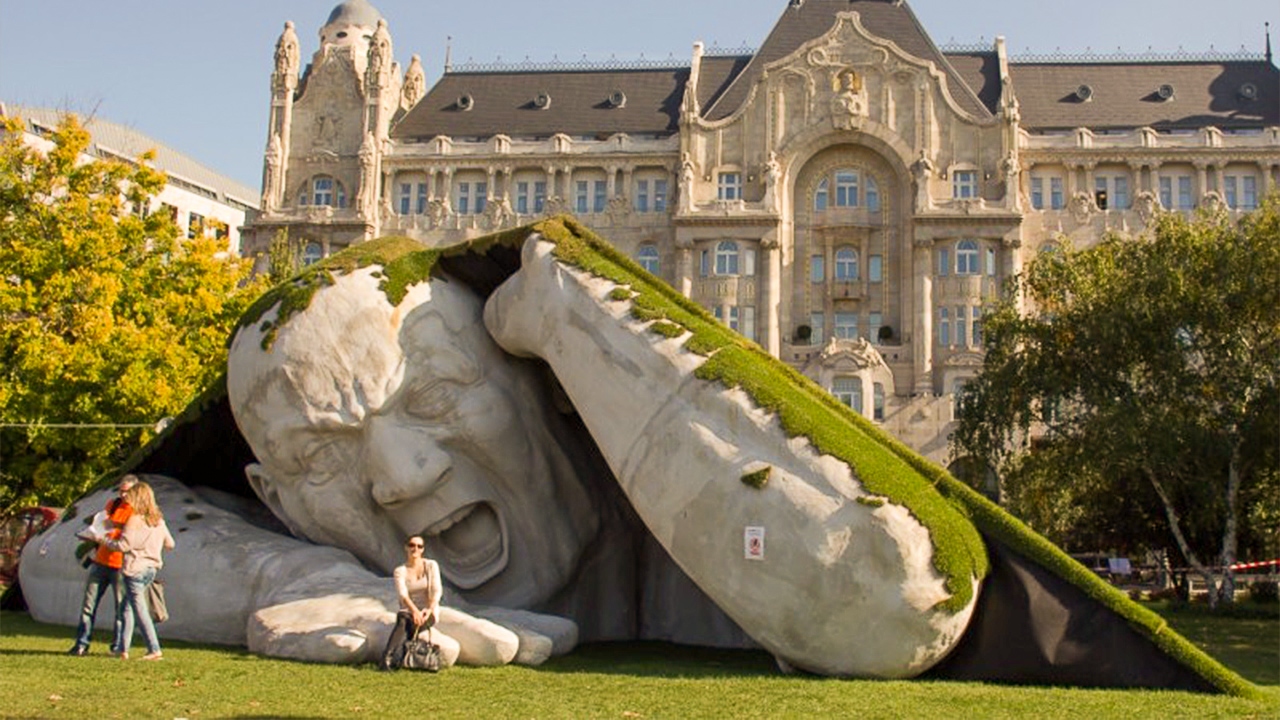
The sculpture, which was exhibited on the grounds of Gresham Palace during the 2014 Art Market Budapest Festival, started as a part of the festival and started to attract attention thanks to its interesting appearance. Considered temporary because it was created from polystyrene, the statue became more famous and valuable than expected when it went viral on the internet. The statue of this giant trying to get out of the underground was interpreted by Gallery Out of Home as a “desire for liberation”.
The ancient legend of the harbor ghost; The Black Ghost – Klaipeda, Lithuania
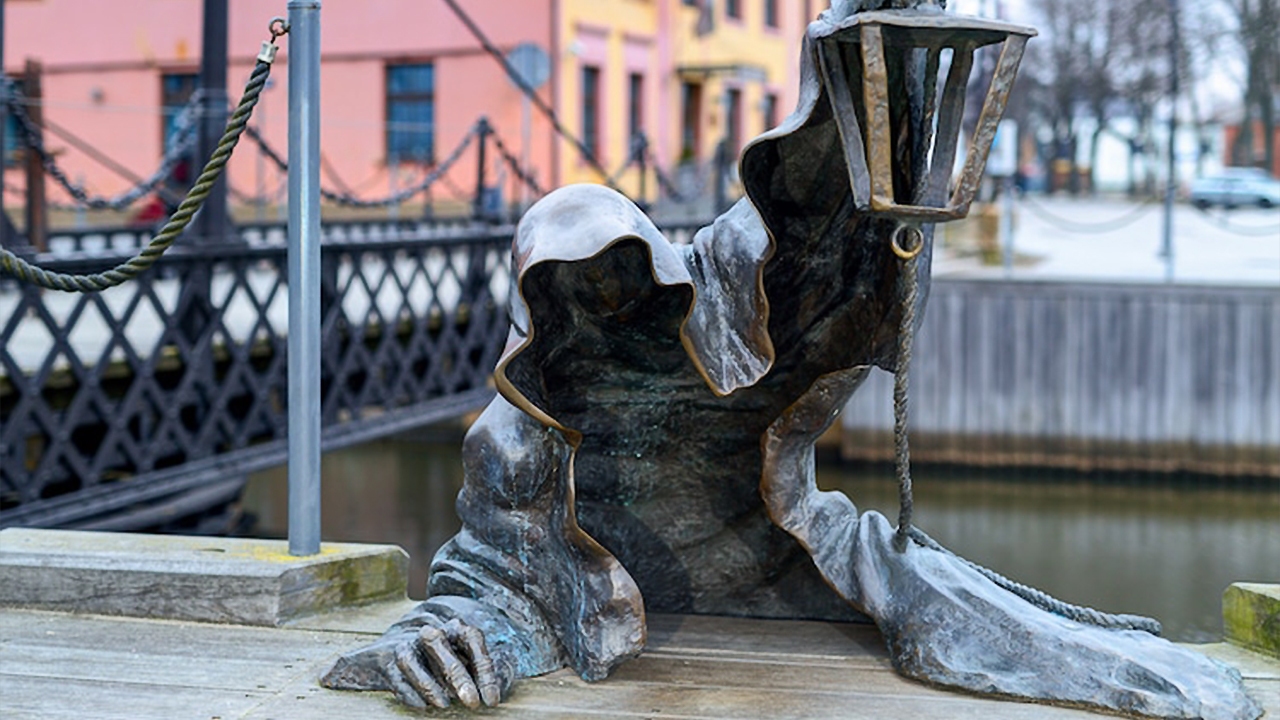
The eerie statue of The Black Ghost, holding the lantern in his left hand, trying to reach the harbor, actually carries a much more opposite meaning than it seems. The inspiration for the construction of The Black Ghost statue, which looks like it came straight out of the Lord of the Rings series, is based on a legend from 1595.
Warden Hans von Heidi claims that while he was making night tours near the harbor, a ghost appeared at the water’s edge and gave a speech about the lack of grain stocks. Hans von Heidi, upon seeing this, makes a statement to increase the grain stock. The years of famine that followed after the events caused this ghost, which Hans had seen and believed, to be declared as the savior. Thus, a statue of the ghost was made by two artists named Svajunas Jurkus and Sergejus Plotnikovas, which will be preserved until today.
These statues were designed to look exactly like this; Les Voyageurs – Marseille, France
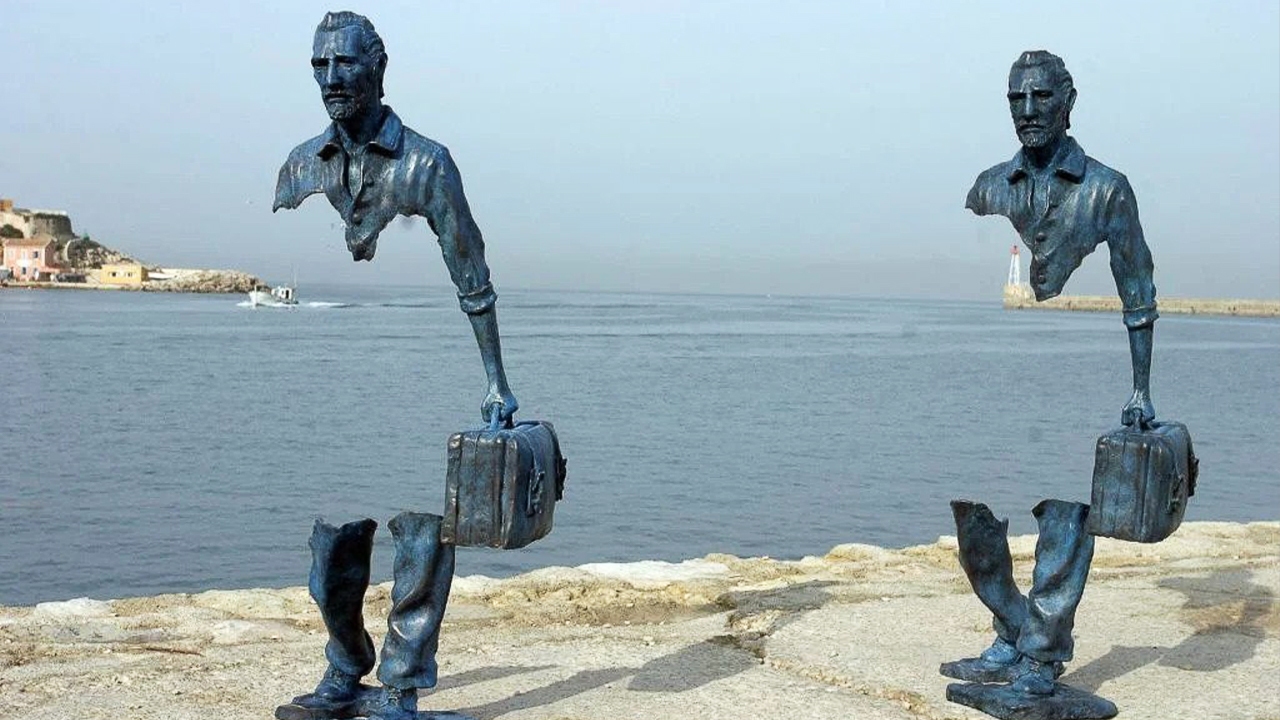
Most of these sculptures with the theme of “working people”, which stand out with their different looks, seem to be missing. However, this deficiency is shaped to form a whole. These works were exhibited in Marseille, which was selected as the European Capital of Culture in 2013, under the movement called “Les Voyageurs” (Travellers). What makes the sculptures interesting is the unique design idea underneath.
Hippopotamuses giving a concrete perspective to surrealism; Hippo Square – Taipei Zoo, Taiwan
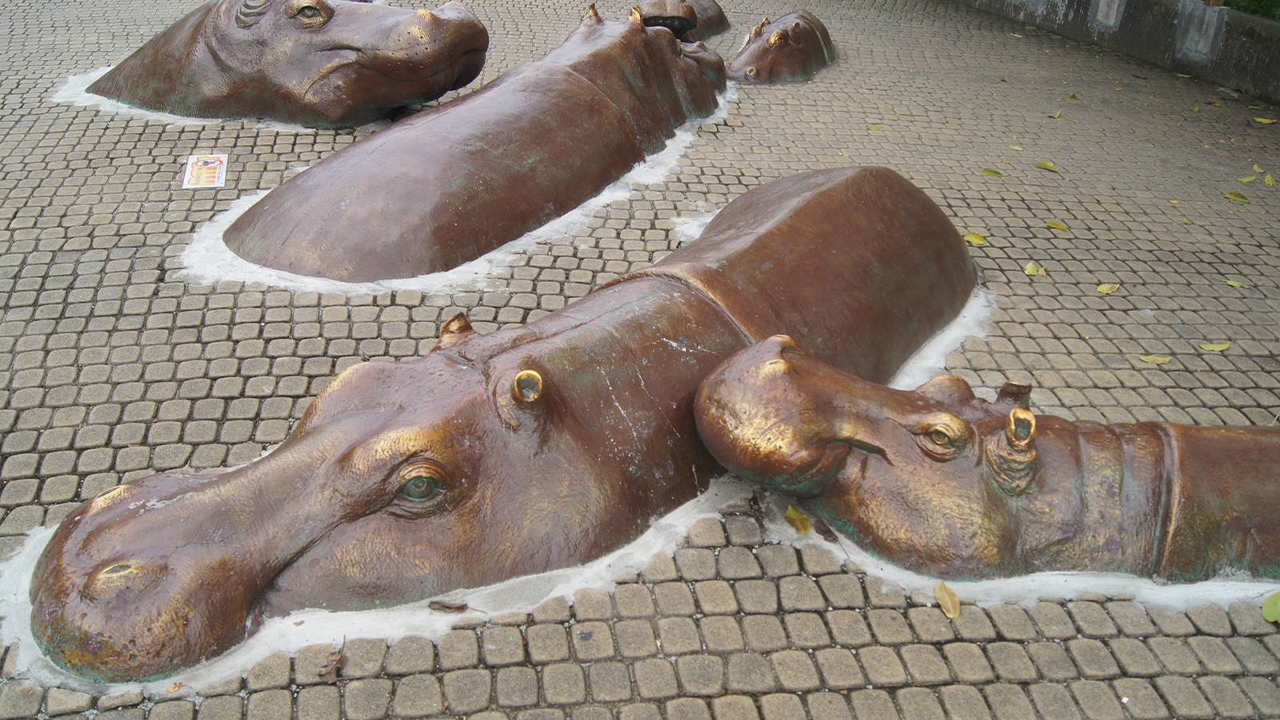
Hippopotamus sculptures that turn the asphalt floor into water have been known as the symbol of Taipei since the day they were created with the creative idea of Chen Pao-chung, the former director of Taipei, one of the largest zoos in Asia. Half-sculptures of hippos on asphalt make it look like hippos are actually swimming.
Sigmund Freud’s dilemma trying to face the fear of death; Man Hanging Out – Prague, Czech Republic
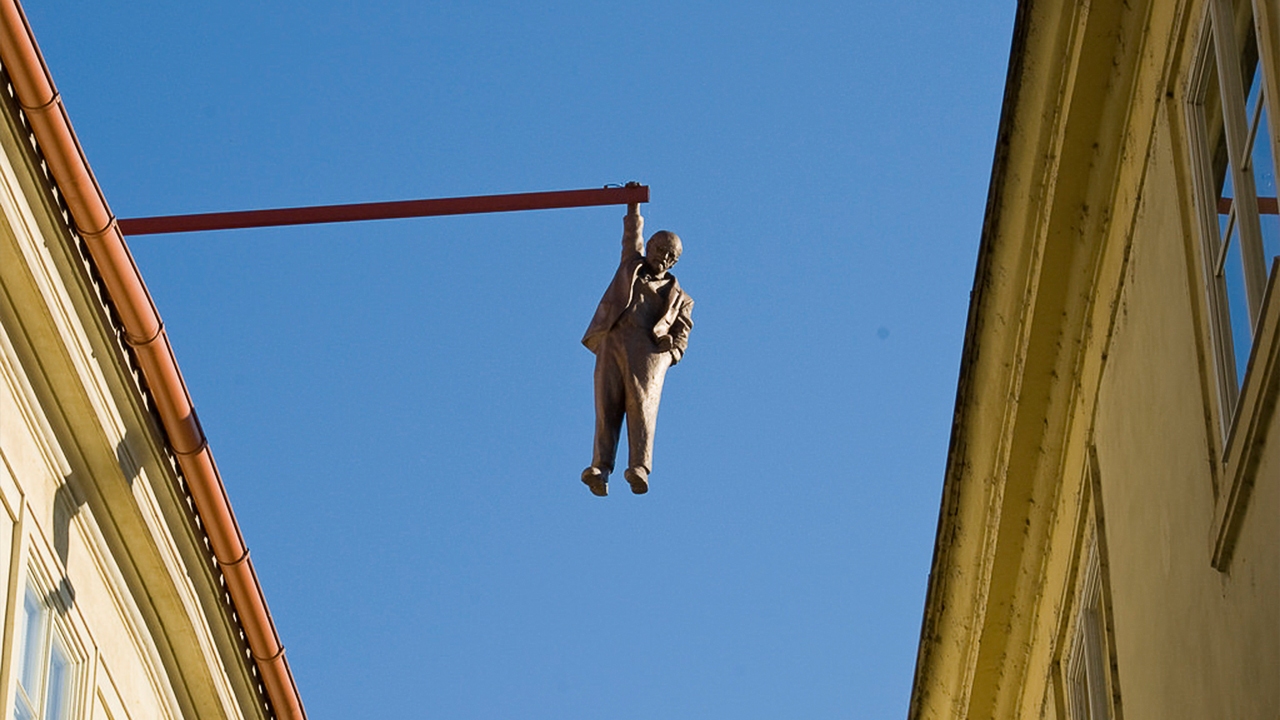
Undeniably one of the most interesting, Man Hanging Out is a sculpture that can arouse fear when seen with the naked eye, especially for those who do not know. And perhaps one of the most philosophical.
The man in this sculpture, made by sculptor David Černý in 1996, is not just anyone, but a reflection of the famous psychoanalyst Sigmund Freud. Trying desperately to hold the pole with his hands and with one hand in his pocket, this figure represents the indecision of Freud, who felt the helpless fear between death and life. Although controversial, this sculpture is thought to be a reference to Freud’s death phobia.
The message of giant hands on global warming; Support – Venice, Italy
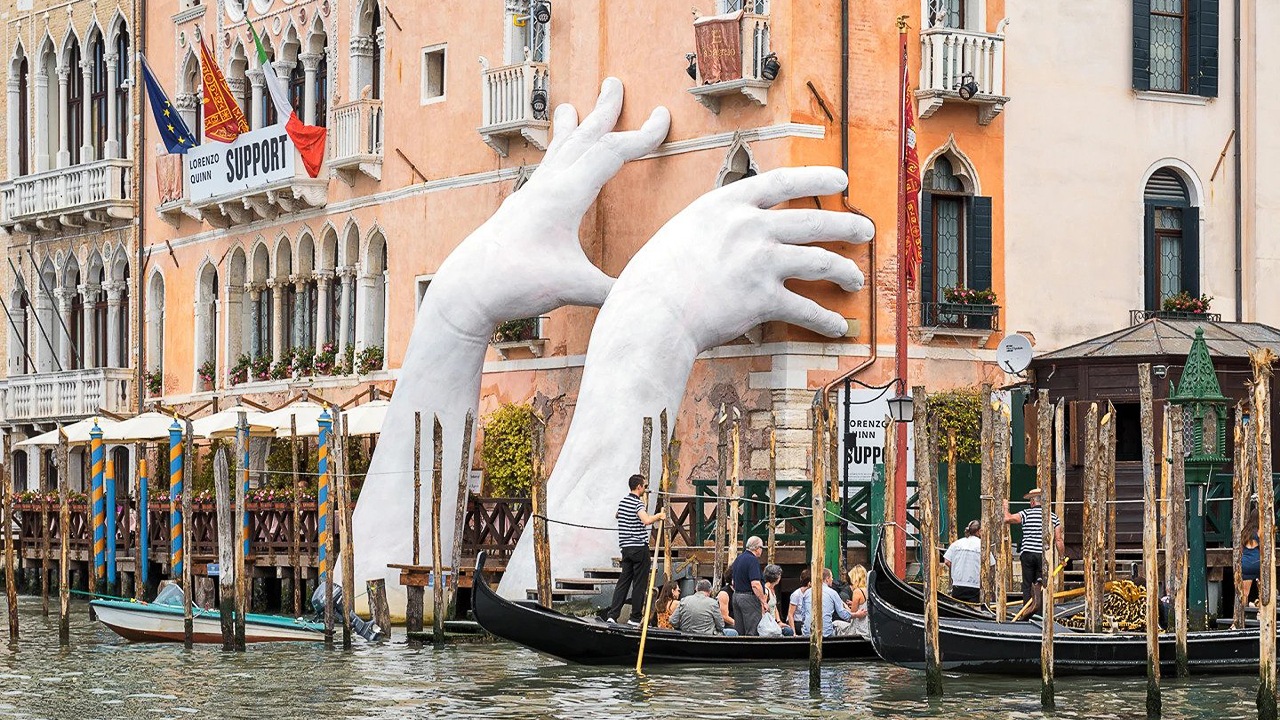
Made by famous sculptor Lorenzo Quinn for the 57th International Art Exhibition at the time, the monumental sculpture consists of two giant hands rising from the canal that seem to support the building where the Ca’ Sagredo Hotel is located. The statue, called Support, was made to raise awareness about water levels caused by global warming.
Importance of nature for human; The Caring Hand of Glarus – Glarnerland, Switzerland
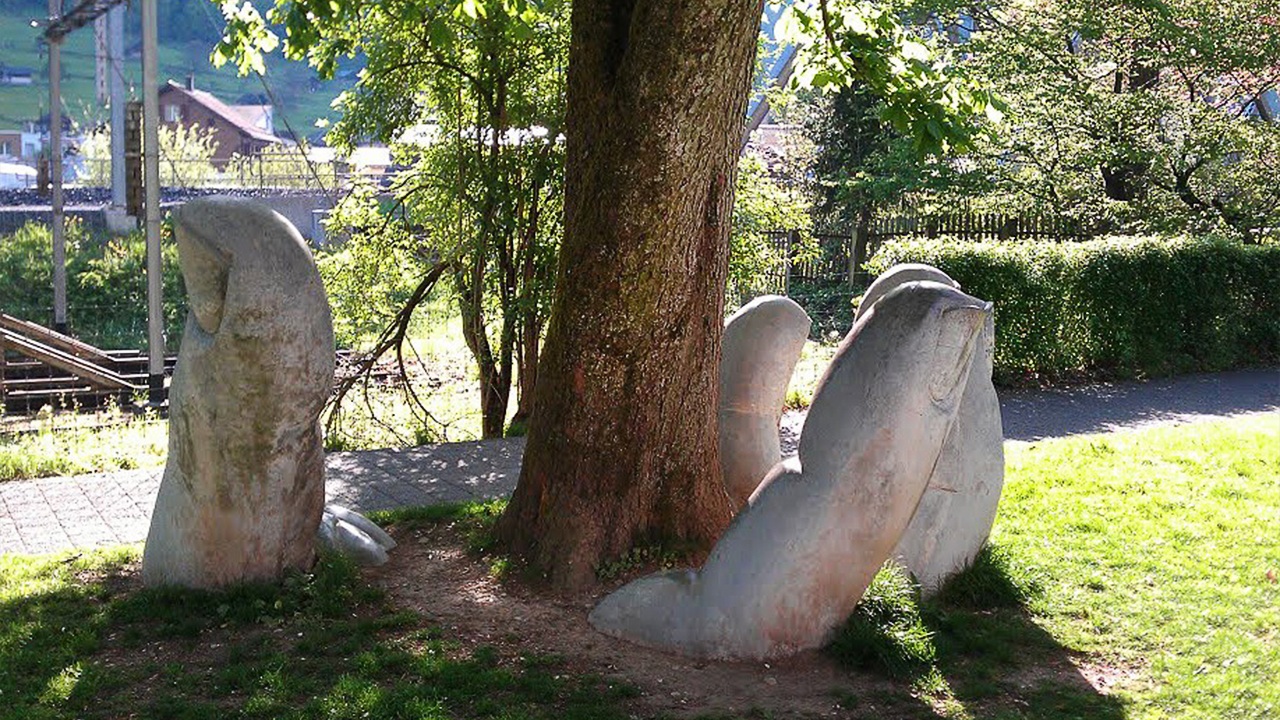
The Caring Hand of Glarus sculpture by Eva Oertli and Beat Huber is another interesting work with beautiful meanings in its background. The tree, located in the middle of the hand sculpture, which seems to be in the ground, is designed to represent meanings such as the unity of human beings with nature and environmental awareness.
Artwork made to be covered with corals; Viccisitudes – Lanzarote, Spain
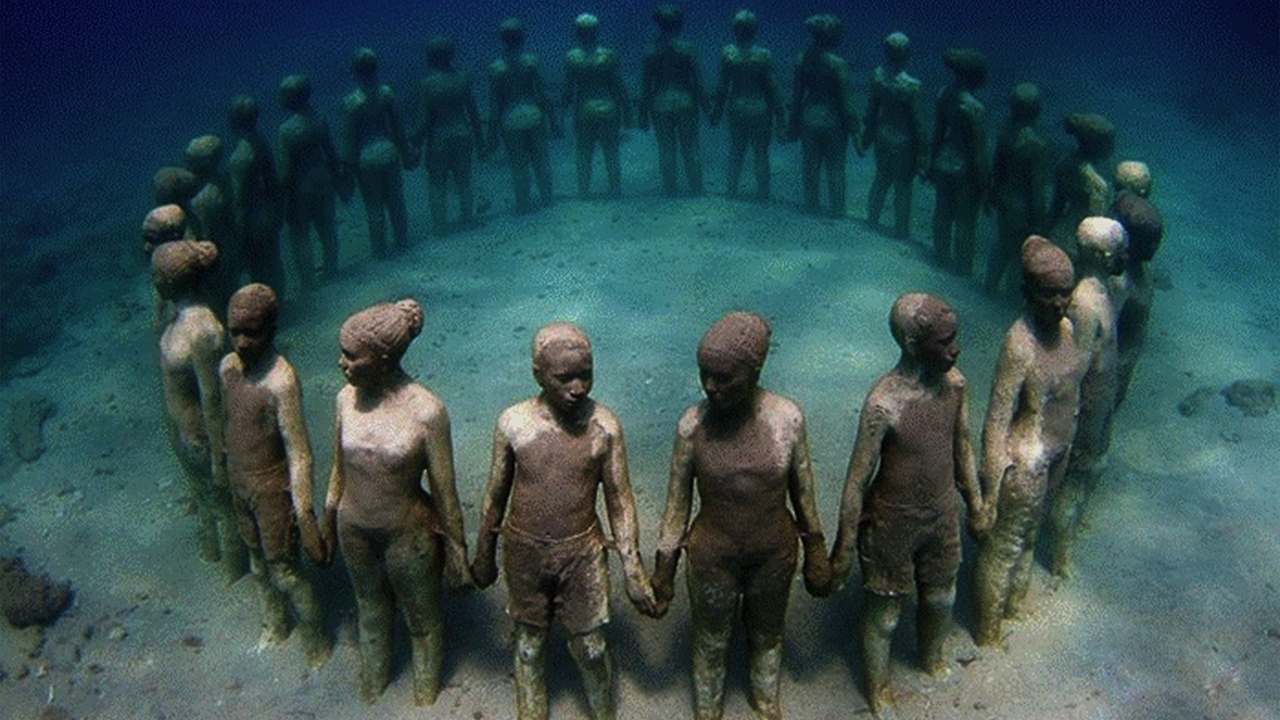
Sculpture of a group of children made of plaster, created from a real mold of children of different ethnic origins. Located in Molinere Underwater Sculpture Park, the sculpture was created by an artist named Jason deCaires Taylor. He wanted to revive the sense of unity with sculptures of children holding hands, forming a circle to resist the flow of water.
The sculptures were designed to support coral growth by using techniques of lowering the pH of the cement and applying a textured surface. The main purpose of this design was to reflect on art how time and environment affect the human body.
The statue also continues to be interpreted in the middle passage trade. Stating that his main purpose was not to refer to the slave trade, Jason deCaires Taylor also stated that he did not feel uncomfortable because the sculpture he made had raised awareness about the slave trade.
It looks like it came straight out of a fantastic series; Maman – Shanghai, China
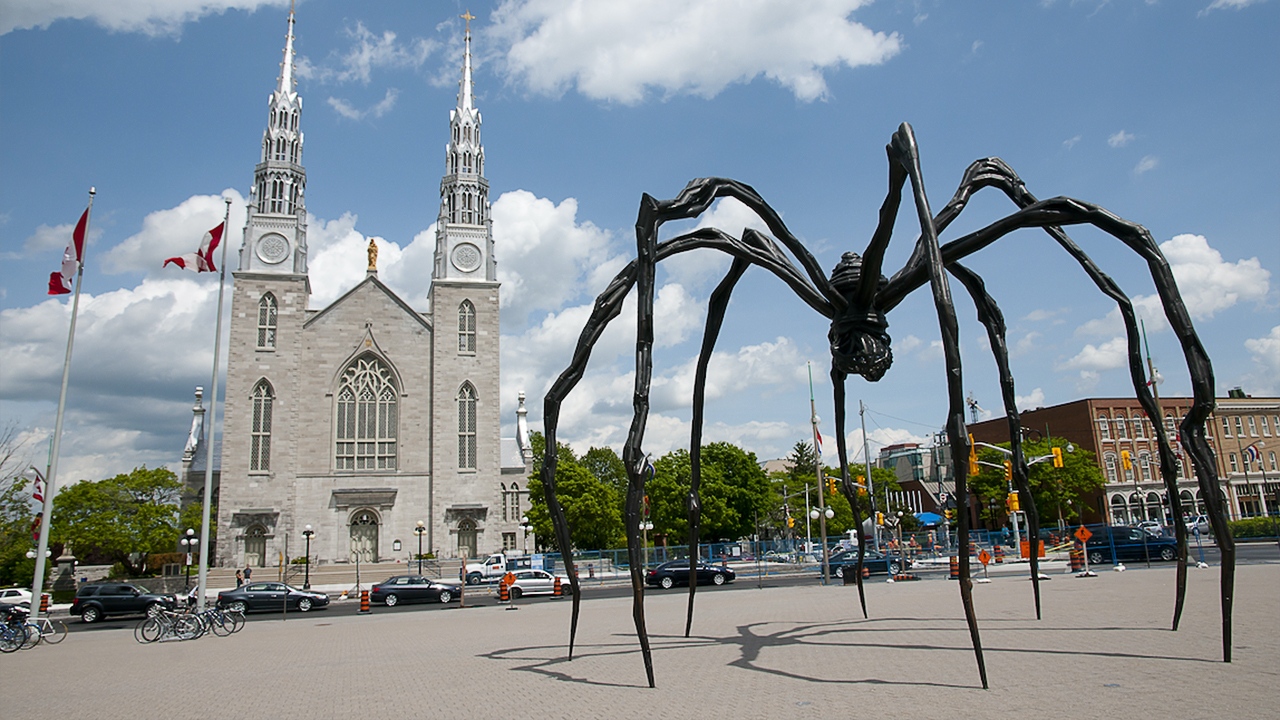
This long-legged spider sculpture found in China belongs neither to Stranger Things nor to Dali’s surrealist drawings. However, they have one thing in common, and that is that they all have a terrifying appearance.
A mixture of bronze, stainless steel and marble, the statue is one of the largest in the world, with a height of 9 meters. You can see it as the equivalent of a building with several floors. Under the spider’s body, there is a sac inlaid with bronze, and there are marble eggs inside the sac.
Artist Louise Bourgeois said that she associated the statue with her mother, that spiders eat mosquitoes, so that spiders are benevolent like their mother. The artist, who lost his mother at a young age, made the spider sculpture “maman”, which means “mother” in French, in honor of his love for his mother. The 1999 sculpture, in which the spider is interpreted in an elegant and motherly way, has been exhibited at the Long Museum since 2018.
There are many interesting sculptures in our country as well as in the world. You can also take a look at our content that we have recreated these interesting sculptures in our country with the help of artificial intelligence;